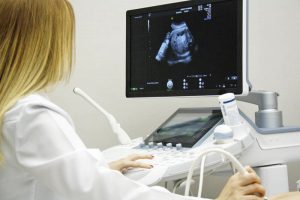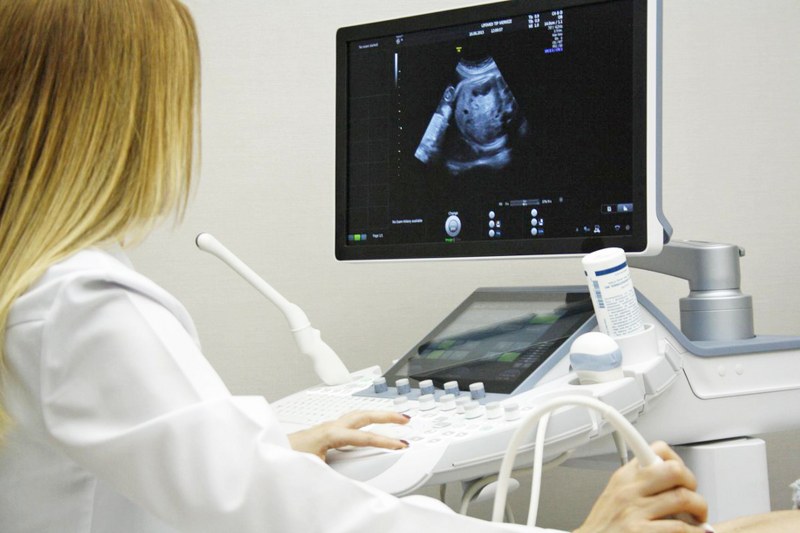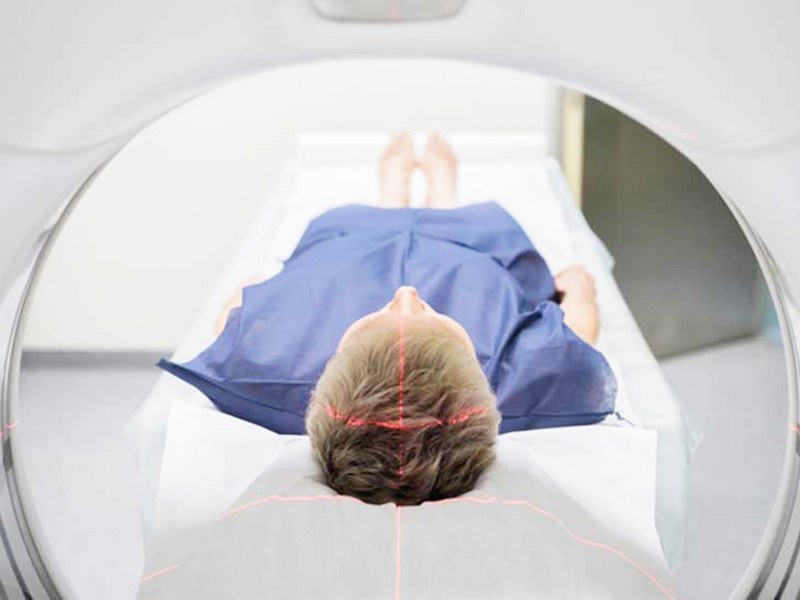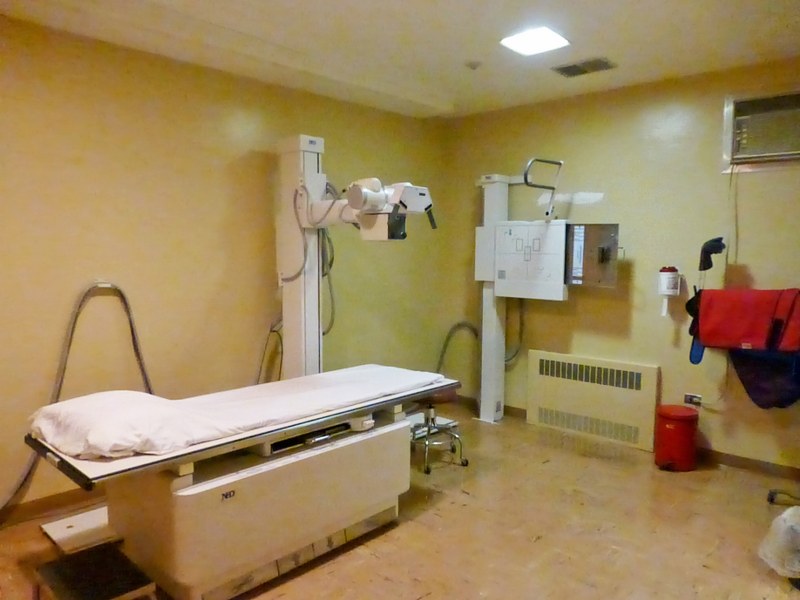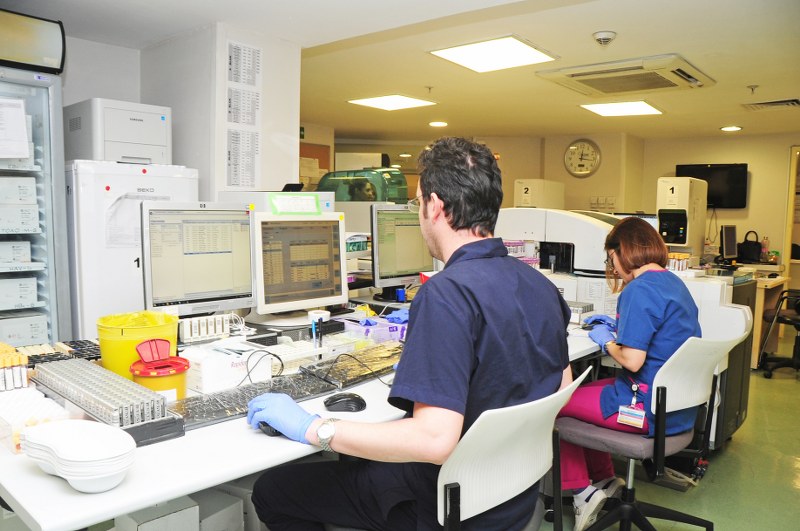- During the camp stage, you have a great opportunity to put your player nominations to the test. To make an appointment at our affiliated partner Medical Park Hospital, please click here.
- Are you looking for a physical examination for your nominated players? Click here to make an appointment with one of our associates.

Enabling all patients, irrespective of socioeconomic status, access healthcare services at international standards based on the principle “healthcare for all”, Medical Park not only closely monitors all advanced technologies and therapeutic methods worldwide, but it also aims to serve as a model which supports science and innovative practices.
Gathering specialists, patient-oriented service approach and multi-disciplinary work in one roof, Medical Park Group of Hospitals provides quality diagnostic and therapeutic services in all hospitals, including four accredited by Joint Commission International (JCI).
Medical Park continues adding new members to the chain in accordance with the principle “it is every people’s right to live healthy and have equal access to healthcare services and it takes firm steps to spread all regions of Turkey and to increase healthcare standards based on advanced technology, with no sacrifice from medical ethics. Continuously setting higher service standards and combining ease of access, experience and volume with patient oriented treatment approach, our Group aims to create a totally new vision in the healthcare sector with the brand “VM Medical Park”. Carrying the hospital business adapted to changing life style, VM Medical Park makes all diagnostic and therapeutic modalities, which are recently used worldwide, innovative medical technologies and experienced physician staff meet in a contemporary hospital environment. Our efficient, sustainable and dynamic operation system, which is based on team work, opens door to a healthy future.
We make our best efforts with no pause in order to spread and popularize sports, which is an inevitable component of health, and to make it a life style. We feel honored and happy to be sponsor of major sport clubs and sportsmen of Turkey.
Everything is for your wealth.
Abdominal Ultrasonography
Abdominal ultrasonography implies sonographic evaluation of the abdomen. It involves examining the intra-abdominal organs and structures with sonography scanner. Abdominal sonography divides into two modality depending on the abdominal region:
– Sonography of abdomen
– Sonography of pelvis
If the two modality is combined, it is called “Abdominopelvic Sonography”. Abdominal ultrasonography evaluates following organs and structures: Liver, gallbladder and bile ducts, kidneys and adrenal glands, spleen, pancreas, great vessels such as abdominal aorta and
VCI, the lower end of esophagus. Pelvic sonography images urinary bladder of men and women, prostate gland of men and uterus, ovaries and Fallopian tubes in women and the
pouch of Douglas. Abdominopelvic sonography can also reveal out certain abnormalities, such as lymphadenopathy, mass (tumor), cyst and fluid collection.
Lung X-Ray
It is scanned to examine anatomic structures of the lungs, pleura and the mediastinum. A Lung
X-ray is scanned to clarify whether the airways, blood vessels, bones and lungs are normal and
to determine the location in case of a disease. If your doctor has concerns about a problem in
your lungs, Lung X-ray can be ordered to understand whether your lungs are healthy or not.
These are usually as follows:
• Chest pain;
• Pyrexia (High fever);
• Chronic cough;
• Shortness of breath;
• Bone fractures;
• Emphysema;
• Heart failure;
• Pneumonia;
• Pneumothorax.
MR Scaner HD
High-performance MR scanner with a short tunnel is designed for neurological, caediological,angiologic,abdominal and orthopedic examinations,as well as whole body studies.
Advantages of magnetic resonance imaging:
Easy to use, versatile and reliable.İdeal for both new and replacement of absolete equipment.İdeal as a main tomograph in small clinics.Superbly performs the role of
an additional device in large hospitals with a high flow of patients.Low operating costs favor a rapid return on ivestment.The Signa Continuum program allows you to easily upgrade your equipment over time.The combination of low operating costs with versatility of application reliably protects financial investments in the Signa Hdx 1.5 Tesla MR scanner, regardless of the
flow of patients.
Blood Analysis
Complete blood count (CBC)
Complete blood count is the umbrella terms for tests that analyze counts and ratios of the blood elements, such as leukocytes (white blood cells), erythyrocytes (red blood cells), hemoglobin, hematocrit and platelet. The test can reveal out existing blood diseases.
Lipid Profile:
Lipid profile is a group of tests that are frequently ordered to determine the risk of coronary heart disease. It is cleared out that these tests are good indicators of the risk of myocardial infarction or stroke caused by atherosclerosis or occlusion of blood vessels.
Lipid profile includes:
– Total cholesterol
– High density lipoprotein cholesterol
(HDL-C) – frequently called “good cholesterol”.
– Low density lipoprotein cholesterol
(LDL-C) – frequently called “bad cholesterol”.
– Triglycerides
Liver Function Test:
Liver Function Tests are a group of biochemical tests analyzed to understand how healthy the liver is. The metabolites generated by the liver are tested in the liver. An abnormal test result indicates to a problem in the liver. Liver performs many metabolic functions concomitantly and many metabolites are secreted into the bile and the blood. In case of a liver
disease, concentration of one or more than one metabolite in blood increases. The tests analyzed to reveal out the wellness of the liver are called liver function tests.
Following liver function tests indicate the corresponding
condition:
• AST and ALT: the liver damage.
• GGT and ALP: the damage in the bile
ducts along with the liver,
Alanine Transaminase (ALT): It is also called serum glutamic pyruvic transaminase (SGPT). It
is an enzyme that is used while protein is produced. It is secreted to blood when liver cells
are destroyed. It is the most common test used to determine the liver damage. It is abundantly
secreted to blood in the liver damage and ALT elevates. ALT is found only in the liver. In other
words, elevated ALT implies a damage in the liver. ALT test is ordered to diagnose a liver disease or to supervise the treatment in patients with an existing disease or in other words to determine whether the treatment works or not. In this end, ALT can be ordered alone or in combination with other tests. ALT is more valuable than AST in diagnosis and supervision of the liver diseases.
Aspartate Aminotransferase (AST): It is also called serum glutamic oxaloacetic transaminase (SGOT). It is an enzyme that is found in liver cells and used for protein production. It is secreted to blood when liver cells are destroyed and the concentration elevates. AST is found in the heart and the skeletal muscles along with the liver. Elevated AST points to a problem in liver, muscles or heart.
Alkaline phosphatase (ALP): The enzyme alkaline phosphatase is found in liver cells located nearby the bile ducts and in the bones. It elevates in liver and bone diseases. The elevation is associated by elevated GGT in the obstruction of the bile ducts. Isolated elevation of ALP (GGT is normal) suggests bone diseases or tumors or diseases that involve the bone marrow. ALP is high in adolescents, since the osteogenic (bone production) process is quick. It also elevates, as placenta synthesize ALP in the third trimester (the last third months) of pregnancy.
Gamma Glutamyl transferase (GGT): It is found in liver cells in close proximity to the bile ducts. This enzyme offers details about bile ducts and it elevates jointly with ALP in the obstructive conditions of the bile ducts. If GGT is high, but ALP is within normal limits, the potential reasons include alcohol and drug intoxications. Alcohol is metabolized and excreted from the liver and GGT is used for this process. GGT elevates in case of heavy alcohol consumption.
Renal Function Test:
• Sodium
• Potassium
• Creatinine
• Urea
• BUN
• GFR
Renal function tests provide information about the functioning of kidneys. Therefore, doctors
can order creatinine, if there is suspicion that the kidneys do not function well. The patients with renal dysfunction may complain of:
Fatigue, attention and concentration deficit, sleep withdrawal, lack of appetite. The color
of urine can also change. The color of urine can darkens and transform into brown or red (bleeding). Moreover, edema and swelling can be noted in face, eyes, wrists, abdomen, legs or ankles. Since the kidneys do not function well, the volume of voiding can also decrease.
Hepatitis Markers:
Presence of hepatitis markers – substances that are antigen or antibody in nature – in blood points to an existing or inactive viral hepatitis (inflammation of liver). Presence of hepatitis markers in blood reveals out that the person has already encountered a
hepatitis virus. The virus can be identified and the clinical course can be followed up depending
on the type of the marker detected. The evolution of the disease can show inter-patient variations. While Hepatitis A and B virus infections usually recover without leaving a sequel after a transient hepatic damage, hepatitis B virus can lead to acute liver failure and death in some patients due to the short-term hepatic destruction. This clinical picture is called fulminant hepatitis. The patient caries the virus in the body throughout the rest of the life in certain types of hepatitis B virus infections and they are medically called “hepatitis B carrier”. No clinical symptom is observed in most hepatitis B carriers, while some cases can progress to acute hepatitis and chronic hepatitis, potentially resulting in liver failure.
Hepatitis D virus is a “deficient” virus. It can cause infection only if it is transmitted jointly by
hepatitis B virus or only in carriers of this virus. Infection in carries may cause exacerbation of
the clinical condition. In case of Hepatitis C virus infection, the disease progresses to chronic phase in approximately half of the patients. Although hepatitis E virus uses the gastrointestinal system for the transmission, similar to hepatitis A virus, it usually causes fulminant hepatitis especially in pregnant women. Hormonal profile Hormone secretion varies significantly between the women and the men especially starting at adolescence. Hormone secretion is more predictable and far less variable in men especially after the adolescence. However, the case is rather different for the women. Timing of the analysis is very important that is usually based on the data collected from the women. The body carries out ovulation and menstrual bleeding within 1 month. The volume of secretions vary in these periods. The interval of the analysis for the women ranges from Day 2 to Day 5 after the menstrual bleeding starts. The optimal time is Day 3 and Day 4. They should not be analyzed before Day 2 and after Day 5.
If prolactin concentration is assayed, there is no certain timing limitation. Since it is necessary to draw blood for most tests, they are analyzed in morning after a certain period of fasting. However, it is not necessary to assay the thyroid hormones in morning. It can be analyzed at any time of the day.
These tests will generate various and many values. Some of them are as follows:
• LH : One of the principal function is
to hatch the egg. The expected test result
range is 1 to 2.5.
• FSH: It ensures growth and
maturation of the egg. A result above 12
mIU/ml indicates that the ovulation is not
good.
• AMH: It is determinative to show
the capacity of ovaries in the women.
• DHEAS: Its concentration is higher
in women relative to the men and it is
secreted by adrenal glands. High levels
cause abnormal hair growth in women.
• Prolactin: High levels cause
complications in the pregnancy period.
It has effects on the milk production.
• Testosteron: It is found in
higher concentration in women than
men. The higher levels lead to illtempered
behaviors.
Urinalysis
Urinalysis is a test used to analyze your urine specimen. Urinalysis is used to detect and
evaluate a series of different diseases, such as urinary tract infection, kidney diseases and diabetes mellitus. Urinalysis addresses appearance, density and content of the urine.
Abnormal urinalysis result can point to a disease or a condition. For example, the urine appears
turbid rather than clear in case of a urinary tract infection. High protein level in urine can be a sign of a kidney disease.
Abnormal urinalysis result usually requires extra tests and further examination to clarify the cause of the problem.
Player Transfer Full Package
- ECHOCARDIOGRAPHY
- ABDOMINAL ULTRASONOGRAPHY
- BLOOD ANALYSIS (HEMOGRAM, LIPID PROFILE, LIVER FUNCTION TEST, RENAL FUNCTION TEST, HEPATISIS MARKERS, HORMONAL PROFILE)
- URINALYSIS
- LUNG X-RAY
- MRI (2 REGIONS)
Team Full Cover Package
- ECHOCARDIOGRAPHY
- ABDOMINAL ULTRASONOGRAPHY
- BLOOD ANALYSIS (HEMOGRAM, LIPID PROFILE, LIVER FUNCTION TEST, RENAL FUNCTION TEST, HEPATISIS MARKERS, HORMONAL PROFILE)
- URINALYSIS
- LUNG X-RAY
- MRI
